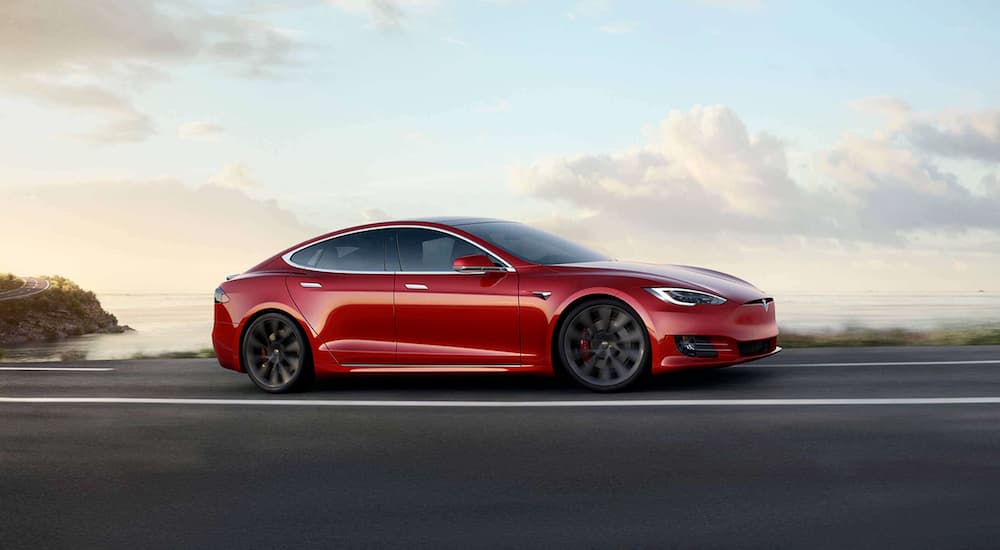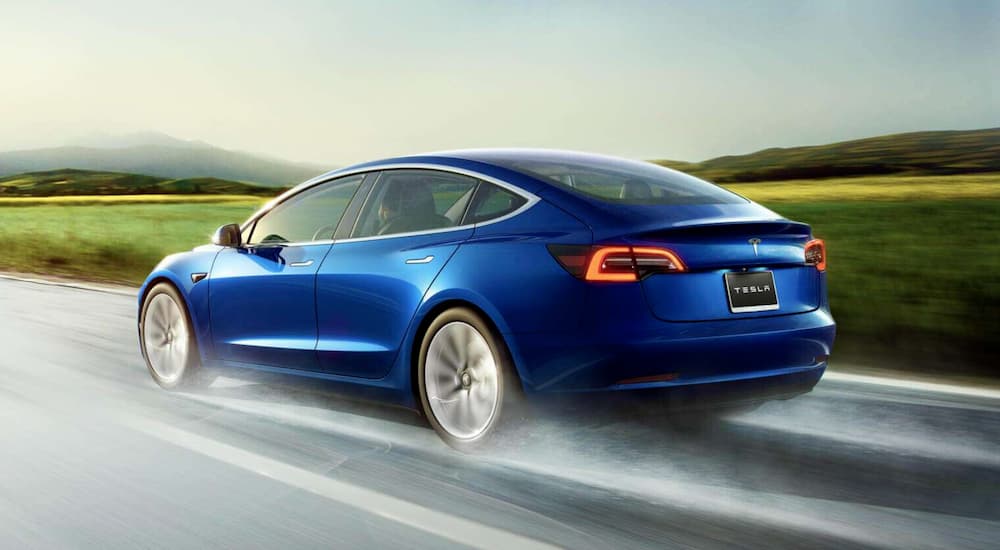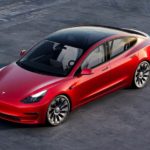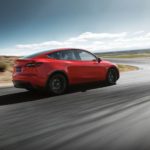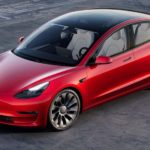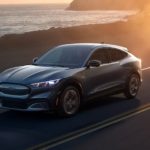We live in a constantly evolving news cycle, with instant updates and a barrage of headlines at our fingertips. It’s easy to get overwhelmed and even easier for businesses to get lost in the shuffle, especially automakers that aren’t consistently updating their line-ups. Over the last few years, global lockdowns heightened our awareness of these headlines as we sat at home looking for new hobbies and ways to stay connected. Automakers felt the pinch as well, with supply chain issues leading to component shortages that halted production. Moreover, transportation became less of a priority because there were few places we needed to go.
While we’re no longer on lockdown, the headlines continue to stream across our phones, and automakers diligently work to pull themselves up by their proverbial bootstraps and more readily meet demand. Even so, it’s a struggle, but not for everyone. Tesla has proven it’s the exception to the rule, teaching us valuable lessons about self-reliance and redefining the automotive landscape in the process. Let’s examine how so in this brand spotlight, “Breaking the Glass Ceiling: A Look at the Rebellious Side of Tesla.”
Going Against Tradition
Ford, Chevrolet, and Chrysler are America’s “Big Three” automotive pioneers, having helped put the world on wheels in the 1900s. It’s impossible to argue with their impact on the industry, but being a pioneer isn’t limited to those that trace their origins to the 1900s. Founded in 2003, Tesla is this generation’s most successful automotive brand and has earned its success by going against tradition.
While Ford, Chevrolet, GMC, Honda, Kia, and every other brand relies on dealerships, Tesla refuses to ask customers to work with another party. Although some might argue that this is a product of Elon Musk’s inherent need to maintain control, it is ingenuity at its finest, and it is forcing other automakers to reconsider their business models. Why the change?
Tesla offers boutique showrooms where customers can see and test-drive models, but all ordering is done online. The company’s success at eliminating the need for dealerships appeals to many customers who are tired of the traditional car-buying experience. We know the process all too well, with pushy salespeople who forcibly initiate small talk because they’re desperate to earn another commission. There’s something genuinely lost in the experience because customers aren’t a priority; their needs go ignored, forcing many dealerships to adopt new practices or reinvent their approach entirely. Tesla doesn’t have to do either.
Tesla’s direct-to-customer platform has introduced drivers to the beauty of building their vehicles precisely how they want, sidestepping the seemingly endless cycle of negotiations or the pressure to spend more on a top-tier trim by working with a dealership and sales team. Instead, the customer controls the process, so the only surprise is the email notifying you when your Tesla is ready. Moreover, Tesla doesn’t have to worry about dealership markups, ensuring every model is priced the same and eliminating the need to negotiate or haggle for a better deal.
Coincidentally, America’s post-pandemic landscape is pivoting toward a few of these ideas and principles. Because automakers like Ford and Chevrolet don’t have the supply to meet demand, they’re encouraging customers to custom-build and order the cars, trucks, and SUVs of their dreams. Of course, dealerships still play a role in this, but the Tesla impact is still incredibly prominent.
Self-Reliance at Its Worst or Finest?
America’s leading automakers are still recovering from the pandemic after an onslaught of supply chain issues, component shortages, and labor concerns. If anything, the pandemic taught automakers the difficult lesson that outsourcing components and software forfeits much of their control over the production timeline. We’re still seeing the effects of this today, with Ford offering incentives to customers if they opt for a different Bronco trim or another model, like the Escape or Edge. As someone who drives an Edge and wants a Bronco, this ask is quite comical. It’s like wanting a Dr. Pepper and getting a glass of skim milk—they are unquestionably incomparable.
Tesla’s rebellion against tradition has caused quite a stir since its founding in the new millennium. The company has faced harsh criticism for its ongoing production issues over the years. Why? Tesla refuses to outsource its components, keeping its entire production as close to its chest as a winning poker hand. But, after 2019, the tides turned, and Tesla’s self-reliance taught the automotive industry a critical lesson.
When Ford, Chevrolet, and numerous other automakers faced supply chain issues and component shortages, Tesla was already in a position to pivot. By keeping their production in-house, the effect of the pandemic meant little more than rewriting the software on available chips to match what they needed and remodifying existing parts. Tesla’s self-reliance meant production continued, as General Motors, Ford, and other key players were at the mercy of third parties to deliver the ingenuity and components required to build the models that accounted for their success.
Less Is More
Since the pandemic, Tesla’s self-reliance has inspired many automakers to reconsider their business models to gain more control over their fates. That said, Tesla has an advantage because it’s not a major producer like Toyota, Ford, General Motors, or Chrysler. As a result, keeping production in-house is manageable, and growth is incremental, at least for now. Moreover, Tesla doesn’t abide by the same mantra that “more is always better” with their models, which seems to be the very antithesis of our culture today.
Anytime you purchase a vehicle, you’re inundated with options because automakers do everything possible to expand their line-ups to ensure there’s something for everyone. Every line-up is meant to be all-inclusive, from budget-savvy base models to top-tier trims with leather seating and premium finishes. Unfortunately, however, this can be confusing and overwhelming, often forcing you to settle because you can’t find the perfect combination of features that satisfy your “must-have” list.
Tesla does the opposite of what we expect of automakers and maintains a simple, streamlined line-up. Fewer options give Tesla an advantage because it can focus on what it does best–delivering innovative technology and transforming the user experience. Additionally, a condensed line-up is integral to simplifying the manufacturing process and keeping everything under one roof rather than outsourcing to third parties. It’s another level of ingenuity at its finest, and drivers are learning that less is more, particularly with automakers like Tesla.
Playing Devil’s Advocate
Tesla’s impact on the American automotive landscape is revolutionary because it’s forcing automakers and customers to rethink everything we’ve known about the industry. Even so, the company isn’t immune to issues or oversights. For starters, Tesla’s reliance on a direct-to-customer approach eliminates dealerships and the traditional car-buying process. While this appeals to many, consider how you rely on a dealership for test drives or long-term care. Tesla showrooms are scattered across the country but these aren’t as readily available as Ford, Chevrolet, Toyota, or Jeep dealerships. As a result, a quick test drive or service appointment requires a longer drive or perhaps an overnight stay.
Tesla’s self-reliance is inspiring, but how will the company navigate skyrocketing demand as Americans embrace an all-electric future? Tesla’s production numbers continue to climb, but it’s no longer the only EV brand in the industry. General Motors, Ford, Hyundai, Kia, and many other leading automakers are building stylish and innovative EVs that are surprisingly affordable and more accessible. So how will Tesla face that competition and maintain its identity as a self-reliant automaker determined to defy tradition every step of the way?
Regardless of Tesla’s fate, the company has earned every ounce of its success as a non-traditional automaker. Its defiance of tradition and unapologetic self-reliance teaches valuable lessons in an industry overdue for a fresh perspective. Only time will tell if Tesla can maintain its upward trajectory and self-reliance as rivals gain momentum in a race to lead the transition into an electric future.

